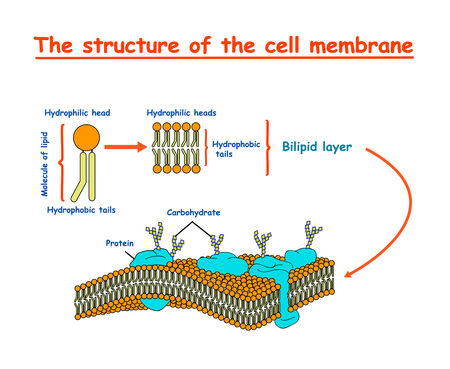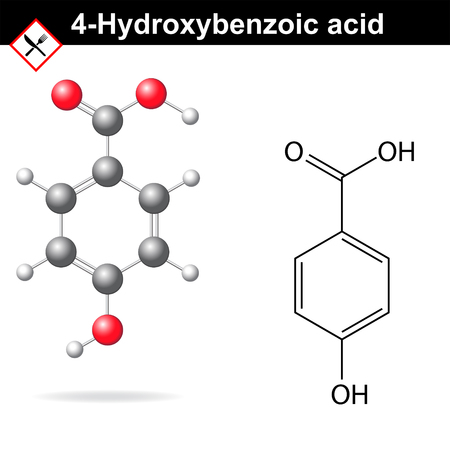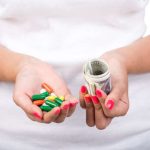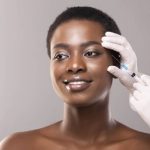1. The Link Between Hormones and Acne
Acne isn’t just about dirt or poor skincare habits—hormones play a significant role in those frustrating breakouts. One of the biggest culprits? Androgens. These are a group of hormones, including testosterone, that increase during puberty and other hormonal shifts.
How Do Androgens Trigger Acne?
Androgens stimulate the sebaceous (oil) glands in your skin, causing them to produce more sebum. While sebum is essential for keeping your skin hydrated, too much of it can clog pores and create an environment where acne-causing bacteria thrive.
The Process in Simple Terms:
| Step | What Happens |
|---|---|
| 1 | Androgen levels rise due to puberty, stress, or hormonal changes. |
| 2 | Sebaceous glands produce excess oil (sebum). |
| 3 | Pores become clogged with oil, dead skin cells, and bacteria. |
| 4 | Inflammation occurs, leading to pimples, blackheads, or cystic acne. |
When Do Hormonal Fluctuations Occur?
Your hormone levels don’t stay constant—they fluctuate throughout different life stages and situations. Some common triggers include:
- Puberty: Increased androgen production leads to oilier skin and frequent breakouts.
- Menstrual Cycle: Many women experience flare-ups before their period due to hormonal shifts.
- Pregnancy: Hormonal changes can either improve or worsen acne depending on the individual.
- Stress: Cortisol, the stress hormone, can indirectly increase oil production.
- Hormonal Disorders: Conditions like polycystic ovary syndrome (PCOS) can cause persistent acne.
2. Hormonal Changes at Different Life Stages
Hormones play a major role in acne development, and their levels fluctuate throughout life. Let’s break down how different life stages—puberty, menstruation, pregnancy, and menopause—affect your skin.
Puberty: The First Acne Trigger
During puberty, the body experiences a surge in androgen hormones like testosterone. These hormones stimulate oil glands to produce more sebum, which can clog pores and lead to acne. This is why many teenagers struggle with breakouts.
Menstruation: Monthly Fluctuations
Many women notice that their acne worsens around their menstrual cycle. This is due to hormonal shifts, particularly the drop in estrogen and rise in progesterone before menstruation. These changes increase oil production and inflammation, leading to breakouts, especially around the chin and jawline.
Pregnancy: Hormonal Rollercoaster
Pregnancy can either improve or worsen acne, depending on individual hormone levels. During the first trimester, an increase in progesterone can cause oil glands to become overactive, leading to more breakouts. However, some women experience clearer skin as pregnancy progresses due to stabilized hormone levels.
Menopause: A New Type of Acne
As estrogen levels decline during menopause, testosterone becomes more dominant. This hormonal shift can lead to an increase in sebum production, resulting in adult-onset acne. Additionally, drier skin during menopause may make acne appear more inflamed.
Hormonal Acne Triggers at a Glance
| Life Stage | Main Hormonal Changes | Impact on Acne |
|---|---|---|
| Puberty | Increase in androgens (testosterone) | More sebum production leads to clogged pores and breakouts |
| Menstruation | Estrogen drops, progesterone rises before period | Pores get clogged, causing premenstrual acne |
| Pregnancy | Progesterone increases (especially in first trimester) | Can cause excessive oiliness and breakouts |
| Menopause | Estrogen decreases, testosterone relatively higher | Drier skin with persistent or new acne formation |

3. Common Hormonal Disorders That Trigger Acne
Hormonal imbalances can play a major role in acne breakouts, especially when conditions like polycystic ovary syndrome (PCOS) and insulin resistance come into play. These disorders affect hormone levels in ways that can lead to persistent acne. Understanding these conditions can help you take steps to manage them effectively.
Polycystic Ovary Syndrome (PCOS)
PCOS is a common hormonal disorder that affects many women of reproductive age. It causes the ovaries to produce excessive androgens (male hormones), leading to increased oil production and clogged pores. This often results in stubborn acne, particularly along the jawline, chin, and lower cheeks.
Signs of PCOS-Related Acne
- Persistent, cystic acne that doesn’t respond well to typical treatments
- Excessive facial or body hair growth (hirsutism)
- Irregular menstrual cycles
- Weight gain, particularly around the abdomen
How to Manage PCOS-Related Acne
Treatment for PCOS-related acne often involves addressing the underlying hormonal imbalance. Some effective approaches include:
- Birth control pills: Help regulate hormones and reduce androgen levels.
- Anti-androgen medications: Such as spironolactone, which blocks excess male hormones.
- Lifestyle changes: A balanced diet and regular exercise can help regulate insulin levels and improve symptoms.
- Skincare routine: Using non-comedogenic products and gentle cleansers can help prevent breakouts.
Insulin Resistance and Acne
Insulin resistance occurs when the bodys cells don’t respond properly to insulin, causing higher blood sugar levels. This triggers an increase in insulin-like growth factor 1 (IGF-1), which stimulates oil production and inflammation—leading to more acne.
Symptoms of Insulin Resistance
| Common Signs | Description |
|---|---|
| Persistent acne | Blemishes that don’t clear up easily, especially on the lower face. |
| Acanthosis nigricans | Darkened skin patches, usually around the neck or armpits. |
| Frequent sugar cravings | A strong desire for sugary foods due to fluctuating blood sugar levels. |
| Difficulty losing weight | Trouble shedding pounds despite efforts with diet and exercise. |
How to Improve Insulin Sensitivity
- Low-glycemic diet: Eating foods that don’t spike blood sugar can help regulate insulin levels.
- Regular exercise: Strength training and cardio workouts improve insulin sensitivity.
- Avoiding processed sugars: Reducing sugar intake can lower IGF-1 levels and decrease acne flare-ups.
- Sufficient sleep: Proper rest helps regulate hormones and reduce stress-related breakouts.
If you suspect that PCOS or insulin resistance might be contributing to your acne, consulting with a healthcare provider can help you find the best treatment plan tailored to your needs.
4. Medical Treatments for Hormonal Acne
When lifestyle changes and over-the-counter treatments aren’t enough to control hormonal acne, medical options can help. Prescription medications target the root cause by regulating hormones and reducing oil production. Here are some common treatments your doctor may recommend.
Oral Contraceptives
Birth control pills containing estrogen and progestin can help balance hormone levels and reduce acne breakouts. They work by lowering androgen levels, which decreases oil production in the skin.
Common Oral Contraceptives for Acne
| Brand Name | Active Ingredients | How It Helps |
|---|---|---|
| Yaz | Drospirenone, Ethinyl Estradiol | Reduces androgen levels and oil production |
| Ortho Tri-Cyclen | Norgestimate, Ethinyl Estradiol | Balances hormones to prevent breakouts |
| Estrostep | Norethindrone Acetate, Ethinyl Estradiol | Lowers sebum production to clear skin |
Spironolactone
Spironolactone is a medication originally used to treat high blood pressure, but it is also effective for hormonal acne. It blocks androgen receptors, reducing excess oil production that leads to breakouts.
Benefits of Spironolactone for Acne
- Decreases oil production in the skin
- Reduces the severity of hormonal breakouts
- Often prescribed with birth control pills for better results
Topical and Oral Retinoids
Retinoids are vitamin A derivatives that speed up cell turnover and prevent clogged pores. They are available in both topical and oral forms.
Types of Retinoid Treatments for Acne
| Type | Examples | Main Benefits |
|---|---|---|
| Topical Retinoids | Tretinoin, Adapalene, Tazarotene | Unclogs pores and reduces inflammation |
| Oral Retinoids | Isotretinoin (Accutane) | Treats severe acne by reducing oil glands size and activity |
If you struggle with persistent hormonal acne, these medical treatments could be an effective solution. Always consult a dermatologist to determine the best option for your skin type and health needs.
5. Lifestyle and Skincare Tips to Manage Hormonal Acne
Managing hormonal acne requires a combination of healthy lifestyle choices and a consistent skincare routine. By making small adjustments to your diet, stress levels, sleep patterns, and skincare habits, you can help reduce breakouts naturally.
Diet and Nutrition
The food you eat plays a significant role in hormone balance and skin health. Certain foods can trigger inflammation and excess oil production, leading to more breakouts.
| Foods to Eat | Foods to Avoid |
|---|---|
| Leafy greens (spinach, kale) | Dairy products (milk, cheese) |
| Berries (blueberries, strawberries) | Sugary foods (soda, candy) |
| Healthy fats (avocado, nuts) | Processed foods (chips, fast food) |
| Whole grains (quinoa, brown rice) | Refined carbs (white bread, pasta) |
| Probiotic-rich foods (yogurt, kimchi) | Caffeinated beverages (coffee, energy drinks) |
Stress Management
Chronic stress increases cortisol levels, which can lead to excess oil production and clogged pores. Incorporating stress-reducing activities into your daily routine can make a big difference in managing hormonal acne.
Tips for Reducing Stress:
- Meditation: Practice mindfulness or deep breathing exercises for at least 10 minutes a day.
- Exercise: Engage in regular physical activity like yoga, jogging, or strength training.
- Adequate Rest: Take short breaks throughout the day to relax and reset.
- Pleasurable Activities: Spend time on hobbies that bring joy and relaxation.
The Importance of Sleep
Your body repairs itself while you sleep, including your skin. Poor sleep quality can disrupt hormone levels and worsen acne.
Tips for Better Sleep:
- Aim for 7-9 hours of sleep every night.
- Avoid screen time at least 30 minutes before bed.
- Create a relaxing bedtime routine with dimming lights and calming music.
- Avoid consuming caffeine in the afternoon and evening.
A Consistent Skincare Routine
A good skincare routine helps keep your skin balanced and prevents clogged pores. Stick to gentle products that support your skin’s natural barrier.
A Simple Skincare Routine for Hormonal Acne:
- Cleansing: Use a gentle cleanser twice daily to remove dirt and oil.
- Toning: Apply an alcohol-free toner to restore pH balance.
- Treatment: Use ingredients like salicylic acid or niacinamide to target acne.
- Moisurizing: Choose a lightweight moisturizer to keep skin hydrated.
- Sunscreen: Apply an oil-free sunscreen every morning to protect against UV damage.
Merging these lifestyle changes with a solid skincare regimen can help control hormonal acne over time. While results may not be immediate, consistency is key in achieving clearer skin naturally.


